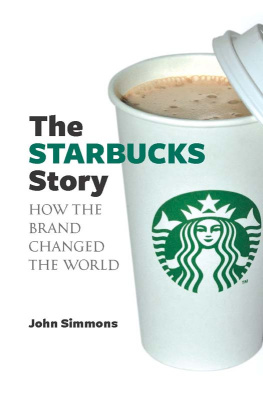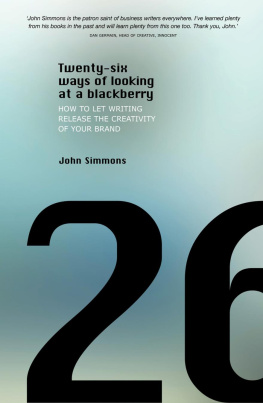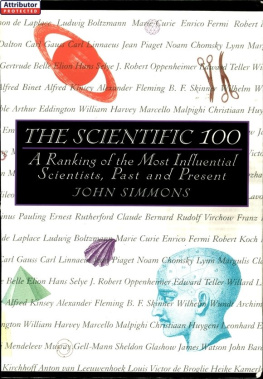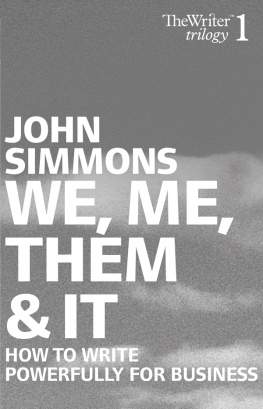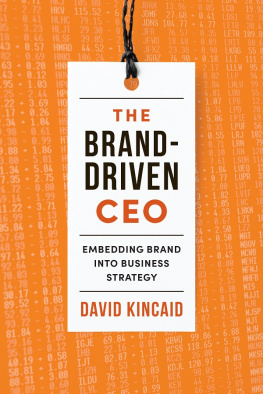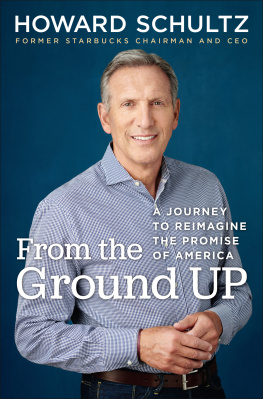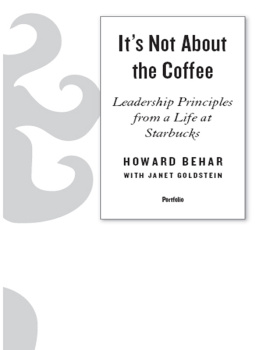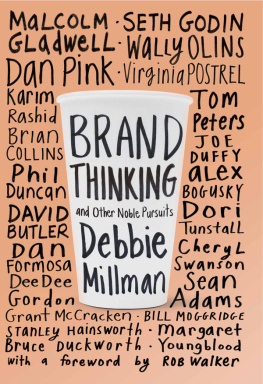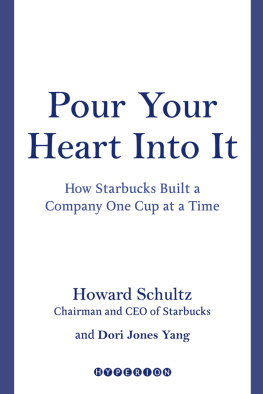Acknowledgments
Martin Liu asked me to edit a series to be called Great brand stories that he intended to publish. Having known Martin from his time at Texere, when he had published my book We, me, them & it, I was delighted to accept. We then planned the series and agreed that I would write this book on Starbucks. Thank you, Martin: it would not have happened without you.
People at Starbucks have helped me by making themselves available for interview. I thank them for their openness. The further I have gone with this book, the more I have found to admire in Starbucks. Above all, it has great people. I thank especially Howard Schultz, Orin Smith, Soon Beng Yeap, Cathy Heseltine, Wanda Herndon, Cecile Hudon, Thomas Yang, Tom Walters, Kathie Lindemann, Rebecca Burke, Sandra Taylor, Sue Mecklenburg, Dave Pace, Jim Donald, Dub Hay, and Marc Stolzman. Extra-special thanks to Carole Pucik, my guide to Starbucks in Seattle, and an endlessly patient recipient of requests and questions. The opinions expressed here are mine and not Starbucks; any errors are mine alone. My thanks and admiration go to the Starbucks Foundation and the National Literacy Trust, which will receive part of the proceeds of this book.
Three books have been especially helpful in my research. Howard Schultzs Pour your heart into it (with Dori Jones Yang, Hyperion, New York, 1997) for his personal account of Starbucks development; Scott Bedburys A new brand world (with Stephen Fenichell, Viking, New York, 2002) for his insights into Starbucks from his time there; and Mark Pendergrasts Uncommon grounds (Texere, London, 2001) for its story of coffee over the centuries.
Pom Somkabcharti has seen this book through production with great care and diligence. Rob Andrews at R&D&Co has designed it with real flair and talent.
Finally, thanks to my daughter Jessie, who took many of the photos. And my constant thanks to Linda, who not only read and commented on the text, but typed most of it, too. I could not have written it without her.
The Starbucks Story
How the brand changed the world
To my founding colleagues in 26:
Margaret, Martin, Tim, Tom, Jim, Ben, and Simon
www.26.org.uk
Copyright 2005 John Simmons
First published in Great Britain in 2005 by Cyan Books
This edition published 2012 by Marshall Cavendish Business
An imprint of Marshall Cavendish International
1 New Industrial Road, Singapore 536196
genrefsales@sg.marshallcavendish.com
www.marshallcavendish.com/genref
Other Marshall Cavendish offices:
Marshall Cavendish Corporation. 99 White Plains Road, Tarrytown NY 10591-9001, USA Marshall Cavendish International (Thailand) Co Ltd. 253 Asoke, 12th Flr, Sukhumvit 21 Road, Klongtoey Nua, Wattana, Bangkok 10110, Thailand Marshall Cavendish (Malaysia) Sdn Bhd. Times Subang, Lot 46, Subang Hi-Tech Industrial Park, Batu Tiga, 40000 Shah Alam, Selangor Darul Ehsan, Malaysia
Marshall Cavendish is a trademark of Times Publishing Limited
The right of John Simmons to be identified as the author of this work has been asserted by him in accordance with the Copyright, Designs and Patents Act 1988.
All rights reserved
No part of this publication may be reproduced, stored in a retrieval system or transmitted, in any form or by any means, electronic, mechanical, photocopying, recording or otherwise, without the prior permission of the copyright owner. Requests for permission should be addressed to the publisher. The author and publisher have used their best efforts in preparing this book and disclaim liability arising directly and indirectly from the use and application of this book. All reasonable efforts have been made to obtain necessary copyright permissions. Any omissions or errors are unintentional and will, if brought to the attention of the publisher, be corrected in future printings.
Cover design by Benson Tan
eISBN: 978-981-4408-76-9
The photographs, illustrations and artworks
on pages 10, 33, 36, 44, 63, 71, 113, 1167,
1269, 136, 137, 163, 170, 171, 176, 178
and 179 are 2005 Starbucks Corporation.
All rights reserved. Used with permission.
Starbucks, the Starbucks logo, the Starbucks Card and
Starbucks Card Duetto are trademarks or registered
trademarks of Starbucks US Brands, LLC in the US and
of Starbucks Corporation outside the US. Hear Music
is a trademark or registered trademark of Starbucks
Corporation. Used with permission.
Contents
A short shot
In 1995, I went on a coast-to-coast trip across the US. When we got to San Francisco, the sun was shining and the people were relaxed. We wandered into a Starbucks, the first Id been in.
We sat enjoying our coffee and the buzz of conversation around us. Theres a willingness to share your life with the world that seems particularly characteristic of California. The overheard conversation ran like this:
I like this place. I come here when Im stressed out.
The people seem OK. Not the usual geeks.
Hey, man, my sisters a barista.
Welcome to Starbucks.
Introduction to the 2012 edition
On 26th February 2008 Howard Schultz closed every Starbucks in the USA. It was a dramatic and unprecedented move by the once and present chief of Starbucks. Schultz had built the company, turned it into one of the worlds best-known brands, run it for many years, moved away from day-to-day running of the business as chairman, then became so concerned that he felt compelled to return as CEO in January 2008.
He came back because he believed that Starbucks had lost its soul. He was determined that it would recover its soul, by returning to the principles, values and spirit that had created the Starbucks brand. The one-day store closure was to retrain the baristas, to reassert the Starbucks romance with coffee. This came with a huge risk and cost actual and potential but it paid off. Stock that had been trading at $7 subsequently rose to $55 after Schultzs return to brand principles.
Howard Schultz tells the story of the turnaround in his book Onward, a stirring tale of leadership in the face of adversity. Starbucks has now bounced back in the eyes of Schultz, customers and business analysts. The recovery has all been about restoring the value and distinctiveness of the Starbucks brand.
This makes the book Im now introducing as relevant as ever. Its the story of the Starbucks brand and it was originally written and published in 2005 when Starbucks was at its most Camelot-like height of wellbeing. It describes the story of the companys foundation and growth, the pivotal role of Howard Schultz, and in particular the development of the brand that is the driving force for Starbucks success. Its what Howard Schultz means by soul. When you read this story you will be reading the Starbucks brand story, but you will also be reading a book about branding. Because, as I write in this book, Starbucks is in many ways the quintessential modern brand. Im happy to stick by these words:
Starbucks is actually one of the purest examples of a brand that we have. It starts with a commodity product coffee beans and invests them with extraordinary added value by creating an experience that transcends the simple act of drinking an unnecessary beverage.
Seven years on from the time I wrote that originally, Starbucks has grown again. The numbers of countries, outlets, sales change constantly so you can never fix the story of Starbucks by using these business measures. What matters more, and what is enduring, are the brands principles, values and philosophy. This means that Im able to say that the story in its essentials is as up to date now as it was on first publication. Perhaps the story has even been proved true by the test of time. All the lessons and conclusions that I drew about branding are as relevant now as they were when first written.

